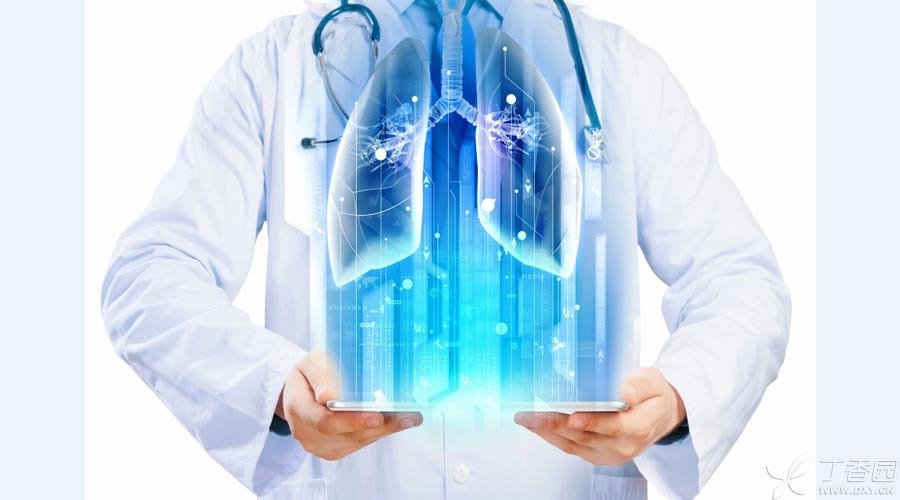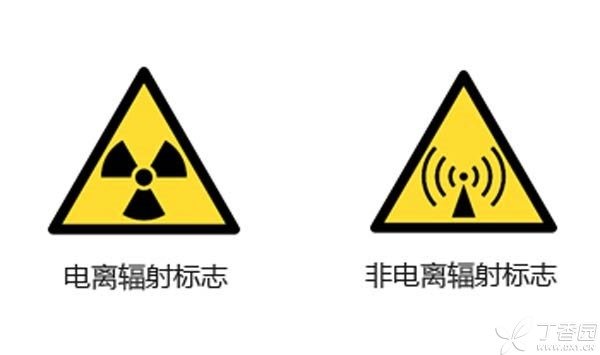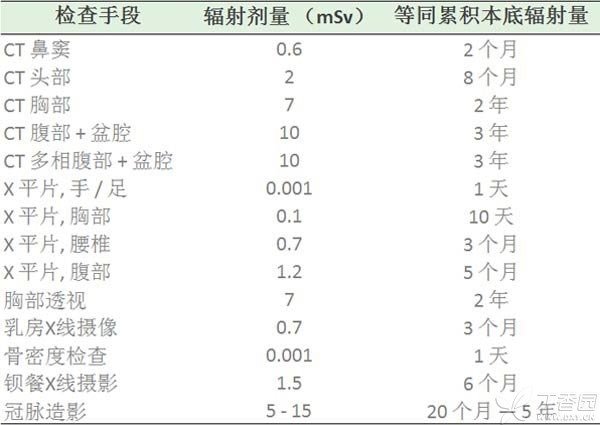
[Radiation], an invisible and intangible thing that is closely related to our life, often causes panic among many people. For example, after the Fukushima nuclear power plant accident last year, people worried about the impact of radiation on their health and even triggered a wave of [salt robbery]. At that time, various kinds of ridicule on the Internet continued.
When we go to the hospital to see a doctor, we will also encounter [radiation] related examinations and treatment methods. For example, we usually need to take X-rays or chest fluoroscopy for physical examination. Outside the examination room, we can see eye-catching radiation warning signs. Doctors do not stay in the examination room much, but all have to sit in the shielded room next door.
Many people have doubts, are these inspection methods with [radiation] really safe?
What is radiation?
First of all, let’s understand that what is radiation.
1. Normally harmless [radiation]
[Radiation] is the common name of electromagnetic wave, which is everywhere:
Electromagnetic waves with wavelengths of 390-700 nanometers are commonly known as [visible light], which is a kind of radiation.
Electromagnetic waves with wavelengths ranging from 760 nanometers to 1 millimeter are commonly known as [heat], which is also a kind of radiation.
The microwave oven we use every day uses the thermal effect of electromagnetic waves and is also a kind of radiation.
These kinds of radiation will not cause damage to organisms at ordinary times, except that they will be scalded if they are too close to the heater or will explode if they are stuffed into the microwave oven.
2. Possible health threat [radiation]
Other types of radiation are called [ionizing radiation], which is what we really need to care about.
The reason why it is called [ionizing radiation] is that this kind of electromagnetic wave has strong penetrating power. When it reaches a certain energy, it can directly [break] the chemical bonds of biological macromolecules and may cause damage to human cells.
In ionizing radiation, apart from ultraviolet rays from sunlight, we can easily come into contact with other radiation, such as X-rays and rays, only under special scenes can we have the opportunity to come into contact with large doses.

Medical Radiation: Extremely Low Risk
Are all kinds of ionizing radiation safe for human body? Let’s get down to business from here.
1. Radiation dose
Because different kinds of radiation energy are different, and the amount of radiation absorbed by different body tissues is also different, in order to facilitate quantification, people have defined a unit called Sv to explain the amount of radiation absorbed by different biological tissues.
By definition, The radiation dose of 1 Sv is equivalent to the tissue absorption of 1 Gy, i.e. Joules/kg. In fact, This unit dose is too strong, which is equivalent to the nuclear radiation dose level absorbed by Hiroshima atomic bomb survivors in that year. Therefore, millisieverts (mSv) are generally used to measure the harm in medicine, with 1 Sv = 1000 mSv. There is a low amount of background radiation in nature, and everyone has about 3 mSv of background radiation absorption every year, which is a good reference index.
2. Types of medical radiation
In the routine examination in the hospital, B-ultrasound and magnetic resonance are non-ionizing radiation examination methods, while X-ray and CT examination will produce ionizing radiation. In addition, there are also some examinations such as [single photon imaging] [positron imaging], which belong to less common nuclear medicine diagnosis and treatment methods and will also produce ionizing radiation.
3. Effects of medical radiation doses on the body
When it comes to the possible effects of radiation of mSV order of magnitude on the body, only [causing cancer] needs to be considered, and [acute radiation injury] and [heat stroke] will not occur.
Theoretically, radiation-induced damage is completely random. If the radiation dose is too large, the probability of DNA damage in cells that bear key biological functions will be greatly increased. Under the influence of radiation, DNA may break, lose function or mutate.
Although DNA has its own repair system, as the number of DNA damaged increases, the number of DNA that has no chance of being repaired will also increase. If the DNA mutation just falls on the oncogene and turns on the switch of cell malignant transformation, then at some time later, the body may develop tumors.
In fact, there are very few research data on exposure to large doses of radiation, most of which come from the research on Japanese nuclear bomb survivors. Therefore, at present, it can only be clearly believed that the probability of cancer will increase significantly only if the human body is exposed to radiation above 100 mSv.
4. How much radiation will a medical examination cause?

In addition to checking the corresponding radiation dose in the table, let’s give another specific example.
CT examination is the most widely used and relatively high radiation examination in clinical practice. For example, an abdominal CT scan brings about a radiation amount of about 10 mSV.
This radiation dose is equivalent to the [background radiation amount] accumulated in our daily environment for 3 years, that is, the radiation amount we receive when we do not do special things in what. In the dose range of 10-100 mSV radiation caused by CT, some studies believe that it may increase the risk of long-term cancer, while others believe that it will not.
As for the carcinogenicity of radiation doses below 10 mSv, only through mathematical models can it be inferred that accumulating a certain amount of radiation may increase the risk of long-term cancer.
However, in the past few decades, hundreds of millions of people around the world have been tested for ionizing radiation at doses below 10 mSv, but there is no epidemiological data showing that these tests are risky.
Weigh the pros and cons and be careful to prevent them.
We already know that the radiation dose of conventional X-ray films is quite low and can be considered completely safe.
The radiation dose borne by CT examination is relatively high, and may even reach a risk dose of more than 10 mSv. However, doctors require CT examination, which is often used only when they suspect that the patient has a major disease and there is no other alternative examination method. Like the choice of other treatment and examination methods, CT examination is also a choice made after weighing the pros and cons.
In the early days of human discovery of radioactivity, there were many tragic events due to failure to prevent it. After that, nuclear weapons and nuclear accidents caused a huge psychological shadow. Therefore, the medical profession is still cautious about CT and other technologies.
If you have received an examination of ionizing radiation in a short period of time, please be sure to tell the doctor so as not to repeat the accumulated radiation dose of CT films.
After measuring the pros and cons in all aspects, medical treatment will also consider special care for special groups: pregnant women and children should reduce radiation exposure as much as possible. When pregnant women and children need to be exposed to radiation examination, protective measures such as lead plates will be placed on sensitive parts such as abdomen. In addition, advanced instruments also have methods to reduce radiation dose (ASIR technology).
For example, if pregnant women and children are suspected of pneumonia for chest X-ray, according to the radiation data (0.1 mSv) given in the table, it is within a very safe range, and the risk is reduced to 0 after the lead plate is placed on the abdomen. Old fluoroscopy equipment (7.0 mSv) is occasionally seen in China. For the purpose of physical examination, X-ray can be considered instead of fluoroscopy.
Final summary
1. Compared with other identified carcinogenic factors (such as smoking), the risk of harmful medical radiation is extremely low;
2. Doctors and engineers are committed to reducing medical radiation dose; When it is necessary to do an examination, refusing the examination is far more risky than radiation.
3. If it is a risk group (children, pregnant women) and has undergone imaging examination in a short period of time, please tell the doctor and let the doctor make judgment according to the specific situation.
This article is exclusively authorized by the author to be used by Clove Garden and refuses any other form of reprinting.
